© 2025 Berryworld, All Rights Reserved
When it comes to getting a good price for strawberries, those first early fruit are incredibly important for a lot of growers, as they will be sold when the wholesale price is still robust.
So it is heart-breaking when those first berries look like this:


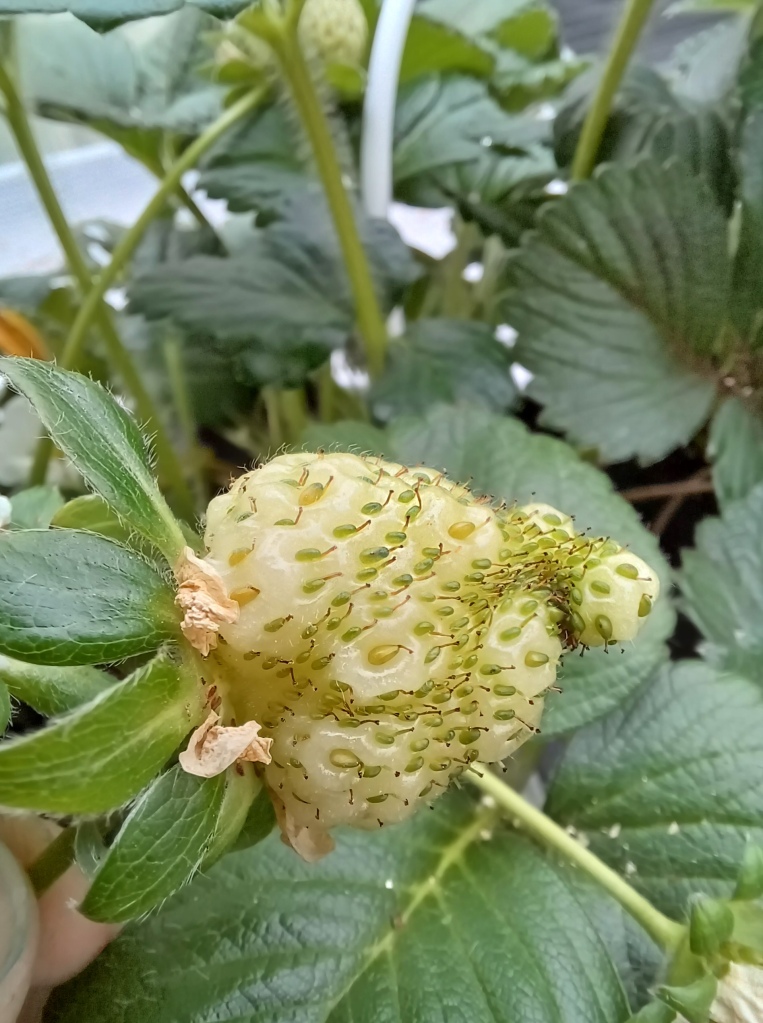
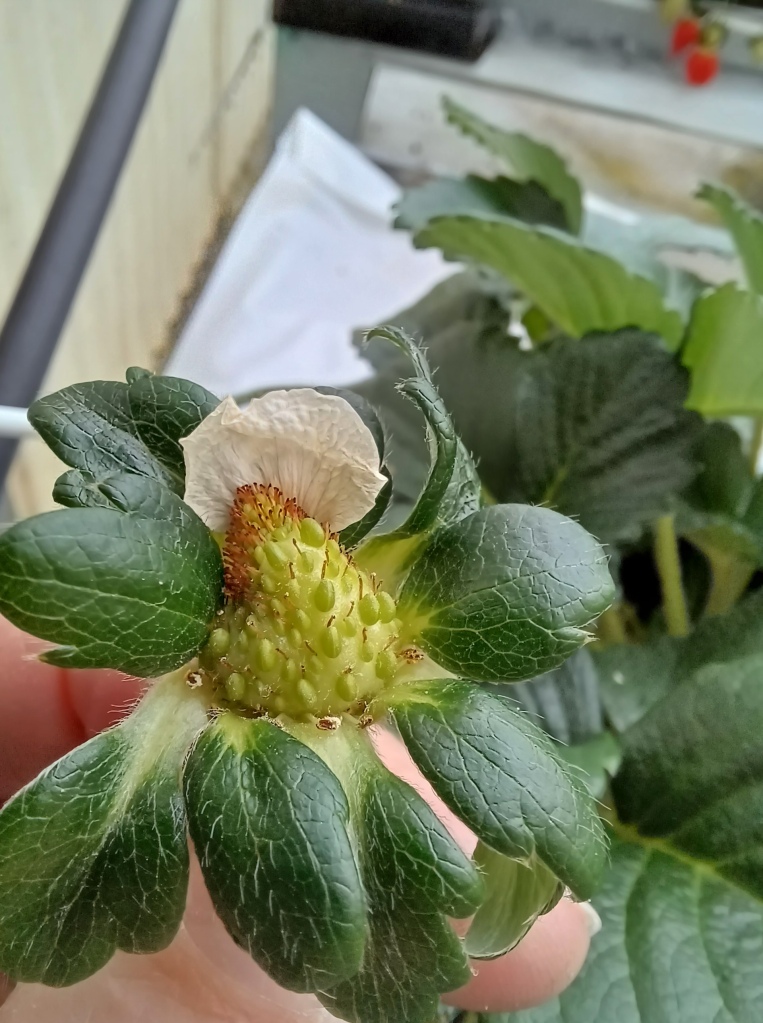
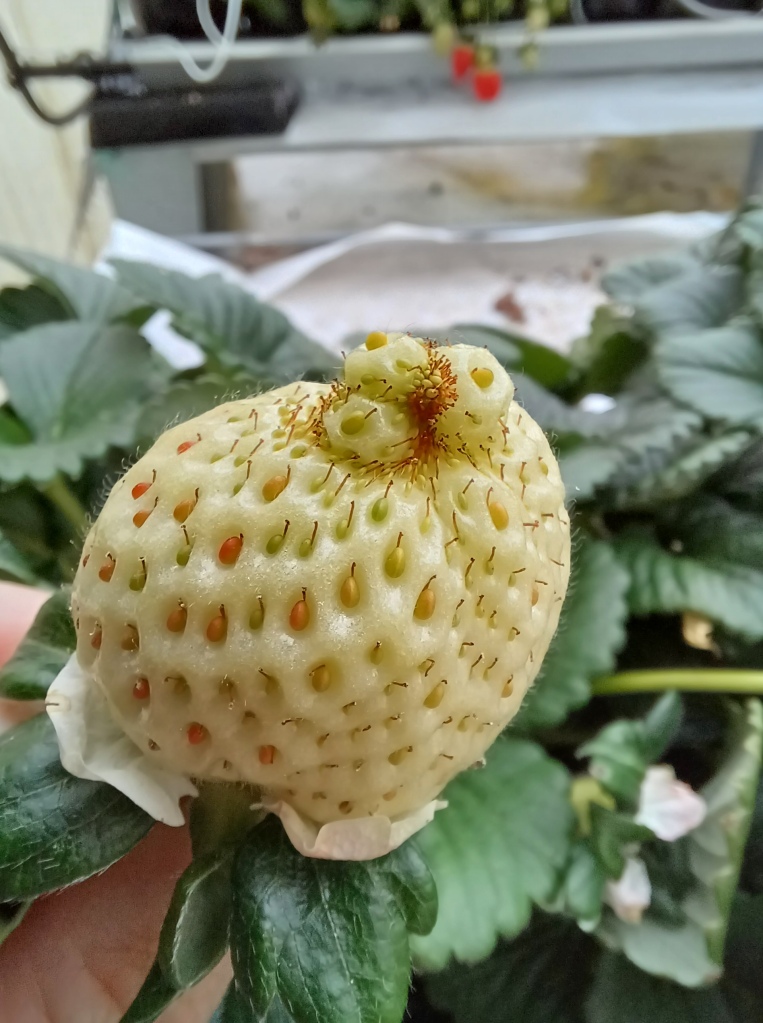
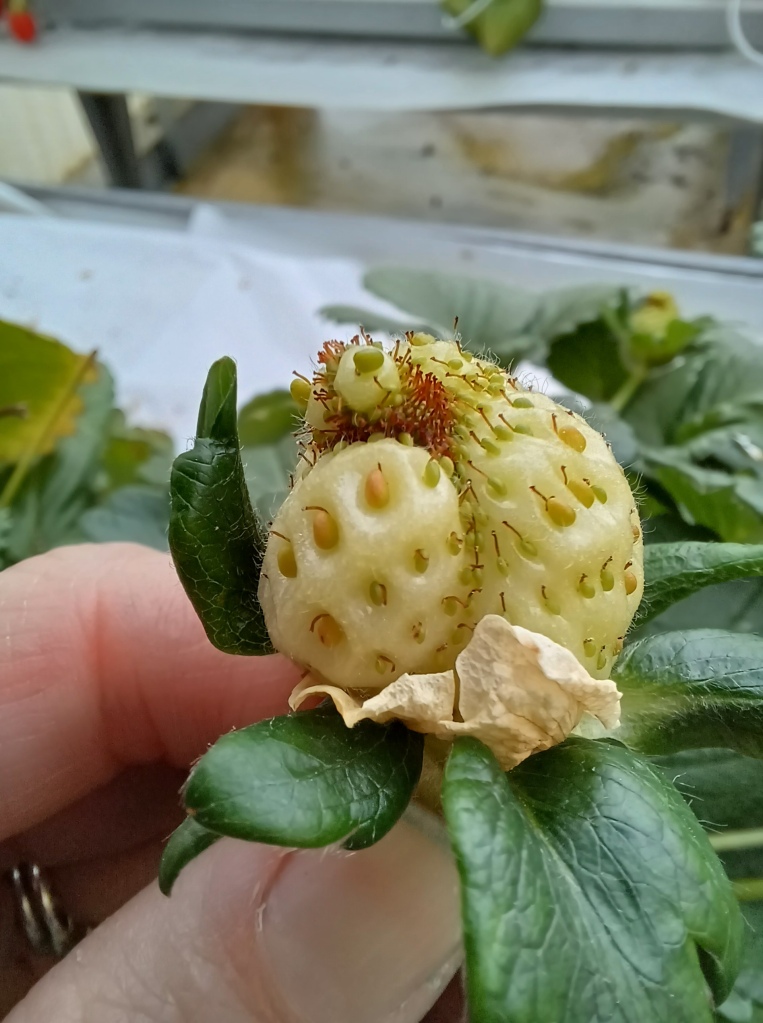
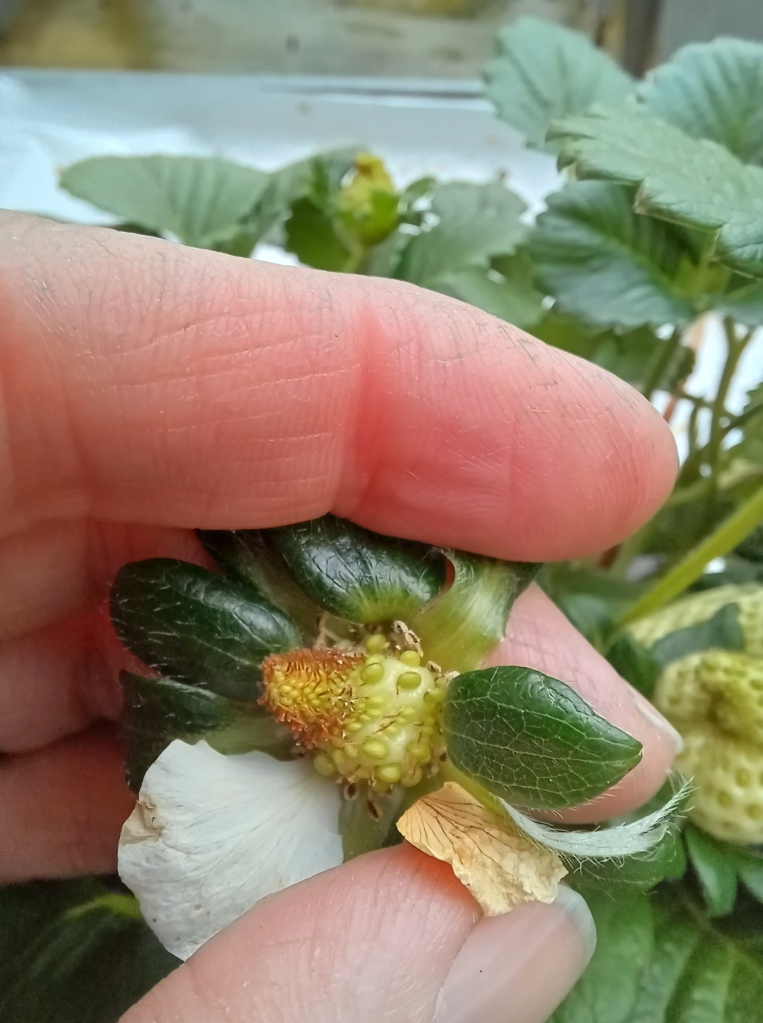
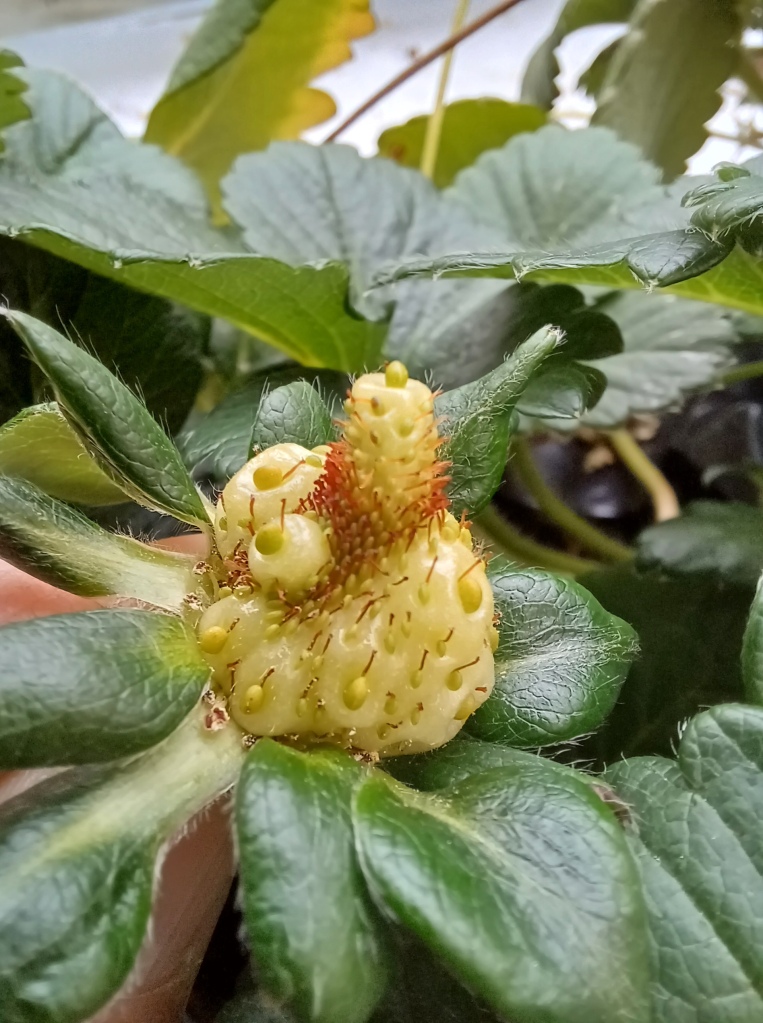
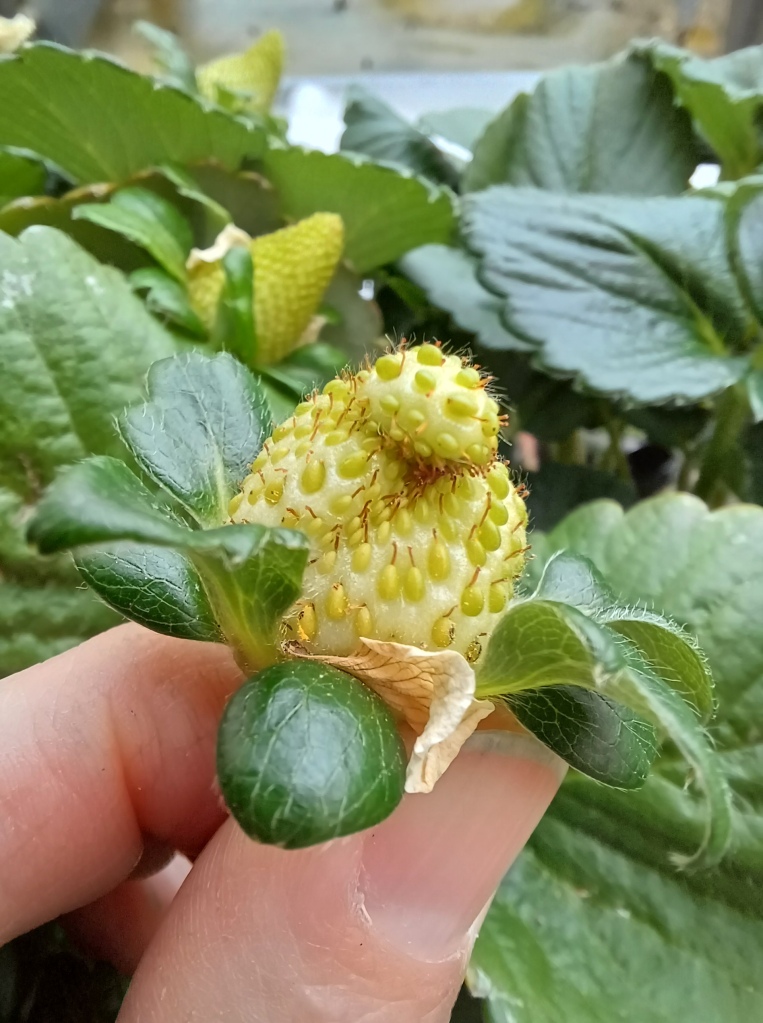
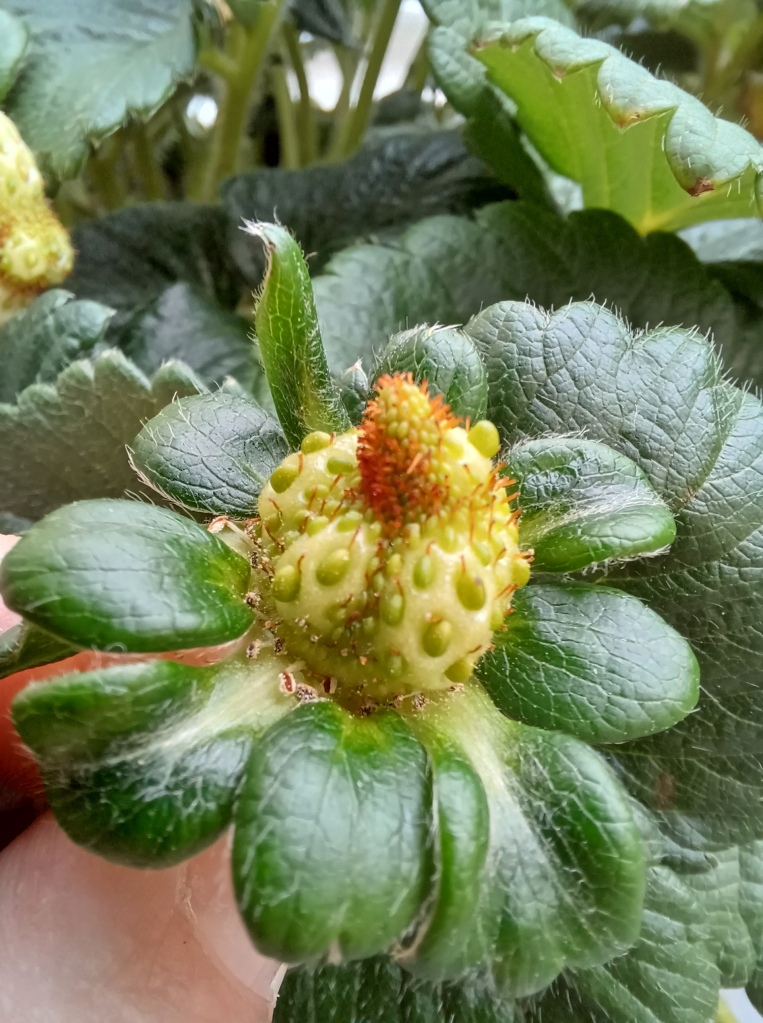


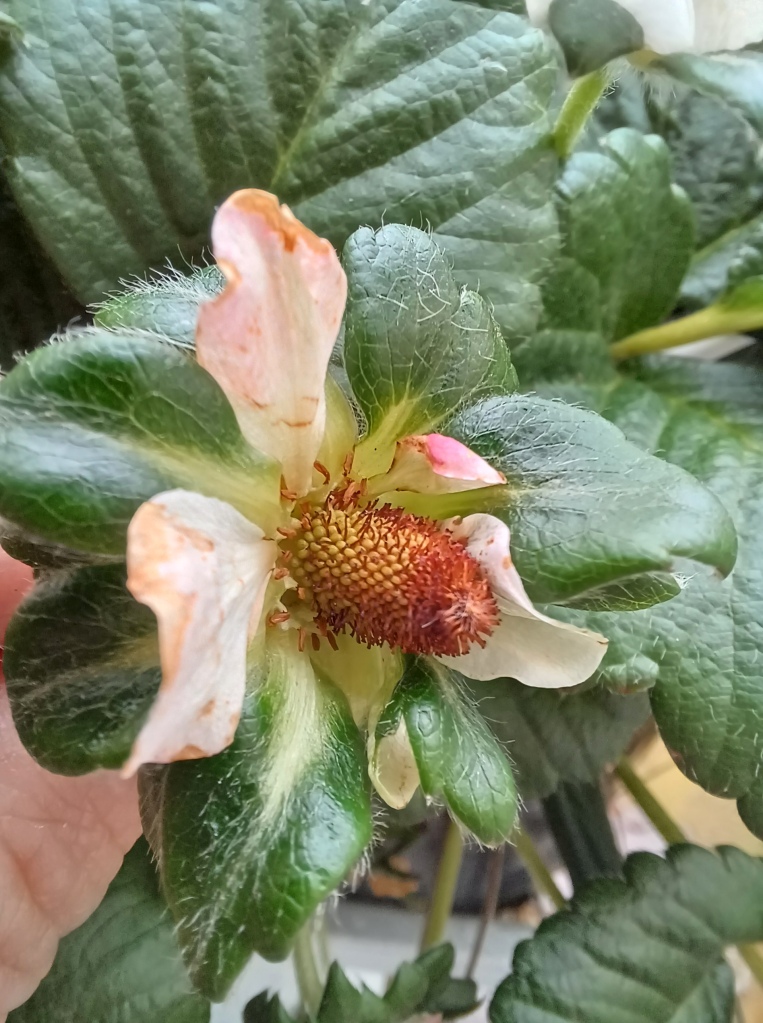
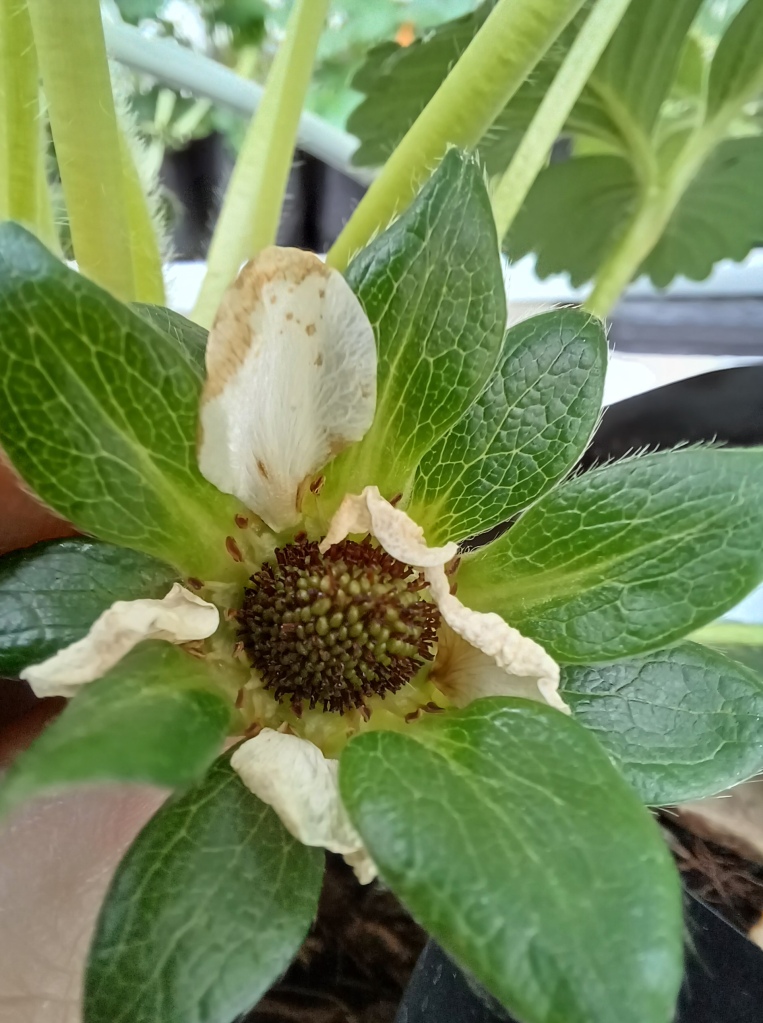
This malformation is because of lack of pollination. You can see that the achene (seed) is there and that it’s not damaged, but it isn’t growing. That means the embryo isn’t alive.
For a strawberry to form evenly, 70-80% of the pistils need to be pollinated. When the seed has a live embryo in it, it pumps out plant growth hormone which causes the developing berry underneath it to swell.
A primer on strawberry sex:
Pollination happens in stages and each stage has to be successful to get a live embryo. First, mature pollen lands on the stigma. Second, the pollen grain germinates and grows a tube down to the ovule. Third, the genetic material from the pollen grain joins with that of the ovule and, voila, an embryo can grow.
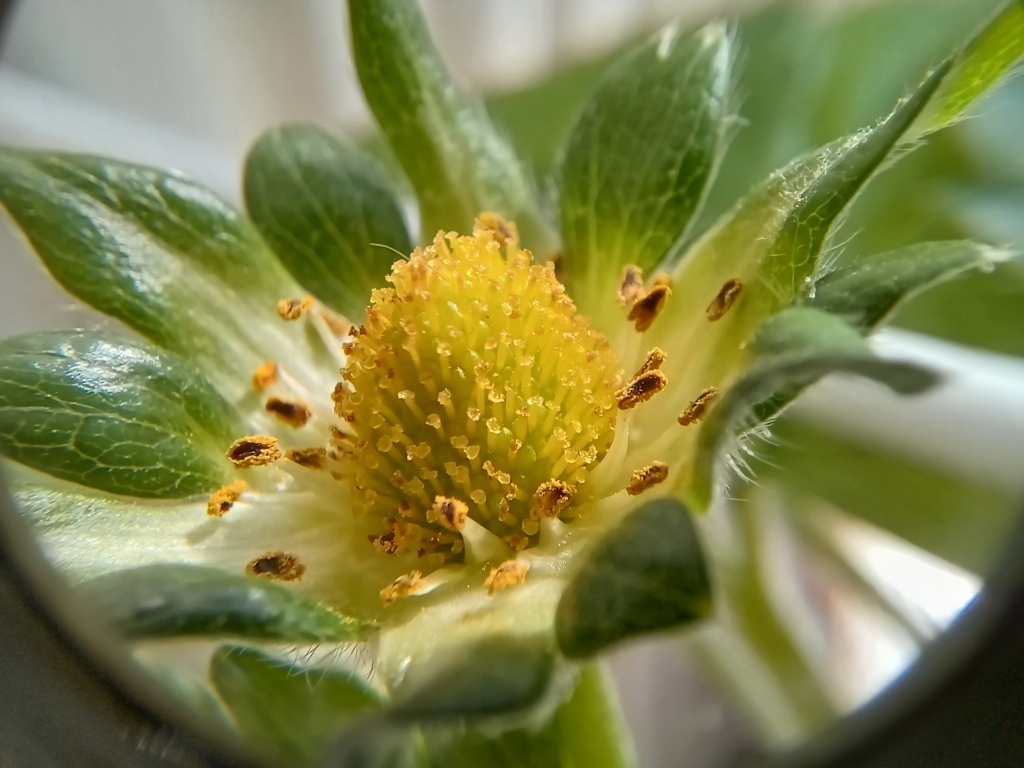
Strawberries are primarily wind pollinated. Their flowers aren’t highly attractive to bees because they don’t make much nectar—contrast this with raspberry or boysenberry flowers, which draw in bees from miles around. Thankfully, strawberry flowers are self-fertile, so a little wind does the job moving pollen from the anthers to the nearby pistils on the same flower.
In our greenhouse where there isn’t any wind. If we manually ruffle the flowers every other day, we get good pollination of the fruits. If we do this less frequently, pollination is disappointing.
Still, even outdoor growers see knobbly berries in spring, and God knows we have enough wind outdoors in the springtime! Why are we still having pollination problems?
Malformed berries when it’s cold:
We all know that sinister look when a strawberry flower has been frosted—the black centre of death forms.
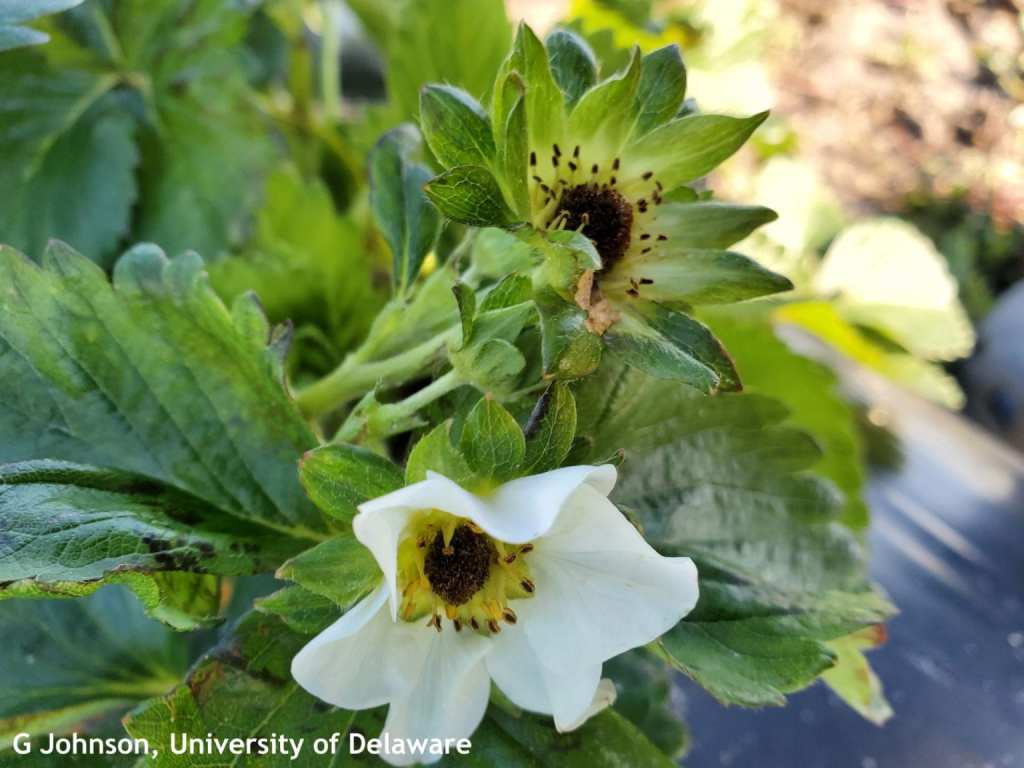
However, there are also low temperature impacts that happen before frost.
Getting a successfully fertilized ovule starts with the pollen landing on the stigma, but then requires the pollen grain to grow a little tube down the style to reach the ovule. Pollen viability and pollen tube growth are both reduced and slowed down at low temperatures.
This was shown in a Korean study where strawberry plants were put in a 2°C chiller for three nights in a row while the flowers were forming (before they even opened). Cold treated plants had 5-15% more knobbly berries than the controls. Interestingly, heat treatment (35°C for three days in a row) also caused knobbly berries, but cold was usually more impactful.
Outdoor growers can’t do much about cold spring nights, but indoor growers can improve pollination by opening up vents during the day to let in wind, or even by running a leaf blower over the plants.